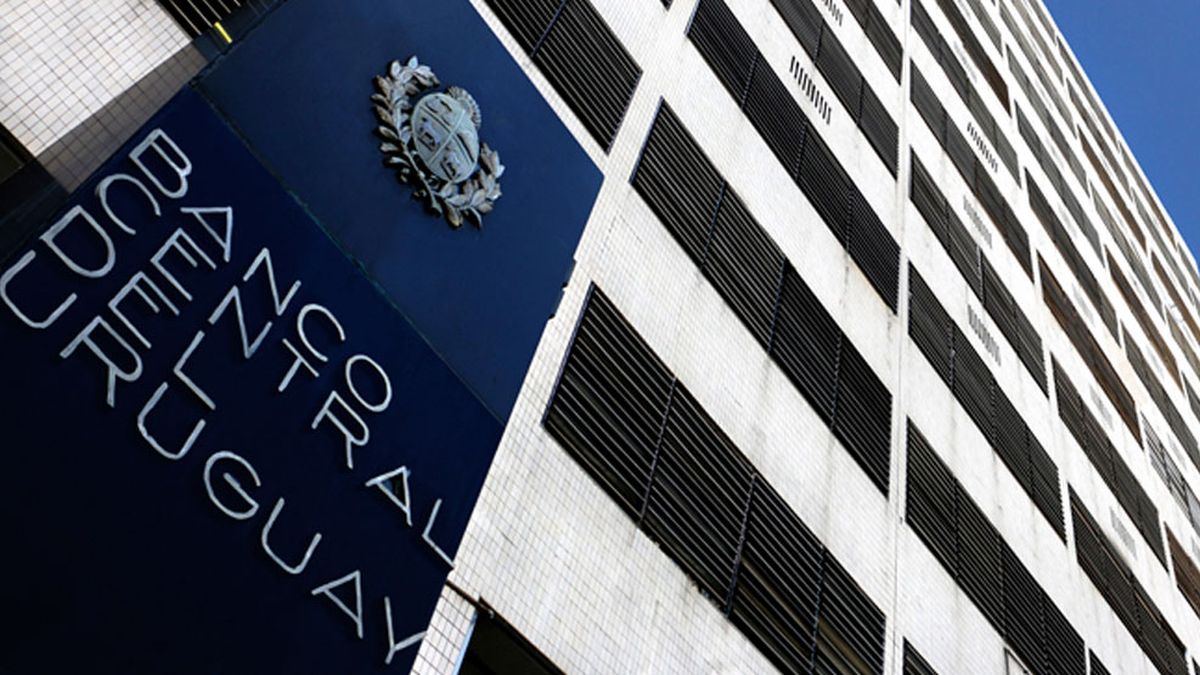The 50 basis point cut in the interest rate decided by the Monetary Policy Committee (Copom) was analyzed differently by economists, since some considered that the decline was “greater than expected” others pointed out that it was something “expected by the market” and a third position was the one that described the reduction as “insignificant”.
The reduction of the Monetary Policy Rate (MPR) by the Central Bank of Uruguay had been anticipated by analysts after the inflation data released this week, which placed the CPI at 5.98%. Once the decrease of 0.5% was known, there were specialists who highlighted that it could be a question of “good news for the export sector”.
It is the case of Francisco Echegoyén, chief of the finance table Gaston Bengochea, who in dialogue with Ámbito.com admitted that “the cut in the reference rate was expected by the market.” Regarding the decision of the BCU, he considered that it was taken “due to the sharp deceleration of inflation, which fell from 7.10% to 5.98%, reaching a minimum of 3 years and even in the last month there was deflation”.
For Echegoyen, the rates of Monetary Regulation Letters “Surely they have a cut in their yields, but in any case they continue to be very attractive to investors, since they have a real return close to 4%”. Among the possible beneficiaries, he considered that “perhaps this is good news for the export sector since, by lowering the rate in pesos, investors turn to invest in dollars.
Inflation has dropped and could continue to decline
In tune with this thought, he manifested Nicholas Cichevski, manager of CPA Ferrere, who stated in a dialogue with this medium that “the BCU’s decision was based on the reduction of inflation (and to a lesser extent of expectations), which had been occurring in recent months.”
Cichevski considered that before the June CPI, “the market anticipated a reduction of 25 bps in the TPM” and compared: “Once the inflation data was known, which was well below expectations (data close to 7% was expected), it was feasible for the BCU to resolve a 50 bp reduction, how it ended up happening.”
The CPA Ferrere economist also considered that “yesterday afternoon, the market seemed to anticipate a decision along these lines, since on the closing of the day the dollar it increased around 1.5% and closed today at 38.33”.
In addition, he was optimistic for the future. “The reduction in inflation that will take place in the coming months, faster than expected, could induce the BCU to lower the TPM faster”, Cichevski anticipated, arguing that this “could justify a slight depreciation of the peso, partly already observed.” Whether that happens, he estimated, “will depend on whether the drop in observed inflation actually ends up translating into a drop in inflation expectations.”
https://twitter.com/JavierdeHaedo/status/1677046741156130824
Insignificant reduction in the monetary policy rate. Production and exports must continue to wait.
— Javier de Haedo (@JavierdeHaedo) July 6, 2023
It was an “insignificant reduction of the Monetary Policy Rate”
From their social networks, Javier de Haedodirector of the Observatory of the Economic Situation of the Catholic University of Uruguay (UCU), described the decision of the Central Bank as a “negligible reduction of the Monetary Policy Rate”.
For the economist, “production and exports will have to keep waiting.” In justifying his position, he argued: “It was obvious that there was an exchange rate for which inflation would go to the target. They found it at 37 pesos. Inflation was suppressed on the eve of the wage councils, conveniently.
https://twitter.com/licandro1/status/1677062666542612483
As expected, the BCU reduced the TPM, resuming the decline that began in April and after a pause in May.
https://t.co/e0pPbHsuwM— jose licandro (@ licandro1) July 6, 2023
“In real terms, Monetary Policy is somewhat more lax”
Meanwhile, the economist jose licandro considered that “although the level is still in a contractive phase, expectations are still outside the target range and have fallen less than the TPM.” That is why he analyzed that “in real terms, Monetary Policy is something more lax”.
“The reduction in current inflation (global and subjacent) should help to moderate union business expectations, making it more feasible for salary negotiations to follow the guidelines proposed by the government”, Licandro said in his networks, regarding projected inflation and the annual correction.
Looking to the future, he analyzed: “Unless significant downward corrections are seen in Inflation expectations in the coming months, It would not seem prudent for the BCU to repeat reductions at this rate in subsequent meetings”. However, he admitted that “the sectoral and political pressures for the pace to be maintained continue to be high, both due to the level of the exchange rate and the proximity of the election year.”
Finally, the economist aldo motto considered that “it is a major loss to that contemplated in expectations, but more in line with what is suggested by the monetary rule”, something to which he linked to “the inflationary moderation of the last months and its inflation projection at the end of the policy horizon (5.3% in 24 months).
“In addition to the inflationary moderation, the Central Bank of Uruguay also hinted at an expansion of the productive gaps (higher idle capacity) when estimating a GDP dip in the second quarter (versus the first) and a slight recovery in the third,” explained Lema.
Source: Ambito




